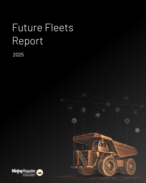Speaking to Energy News on the sidelines of the conference, Washington State University’s Gordon Bloomquist said that while the entire rift zone from Eritrea to Zambia, crossing about 13 countries, all had geothermal potential, Kenya and Ethiopia were the two with arguably the richest potential. Bloomquist has worked for more than a decade almost exclusively in Africa.
“Kenya is estimating something like 10,000MW of geothermal power generation potential,” he said. Kenya’s installed steam power capacity was ranked the eighth, ahead of Japan, Russia, China and Germany, according to a study presented to the World Bank by state-owned KenGen.
The US remains the world’s top geothermal producer with an installed capacity of 3389MW – nearly six times Kenya’s output – followed by the Philippines, Indonesia, Mexico, Italy, New Zealand and Iceland.
“Ethiopia may have in excess of 5000MW which, combined with Kenya’s potential, would alone equal the amount of energy we’ve put online in the last four years in the world,” Bloomquist said.
“Ethiopia is the target of an awful lot of activity, with work being done by Japanese aid organisation, USAid, Icelandic aid, has all been focused on Ethiopia. It’s a microcosm of different types of policy options available to countries, with three or four being tested all at the same time.”
Bloomquist said there were multiple ways to construct policy for geothermal development – as government project, publicly owned or as a privately funded project – and there was a large one currently being contemplated right now.
“There is also a middle way, which is to have the country using some donor money to drill the first 3-5 exploration wells,” he added. “Once they’ve made a discovery, then turn that out for a concession to the private sector, which would then do what they do best – take the risk of building and operating the power plant for the next few years.
“In most places, there is a need for government support, be it from the government itself or from an aid organisation like the World Bank.
“However, if the prices are right and the demand for electricity is high enough, the private sector is usually willing to go in and do it without any subsidies.”
“There may be subsidies, like an extra 2c/KWh if you develop the first 180MW of geothermal, or a tax incentive, either in the form of a production tax credit – which I like very much because you’re only getting credit for what you actually produce.
“Or you can do an investment tax credit, which is often misused, which we’ve seen especially in the US where the wind industry had a huge investment tax credit, when most of the windmills never operated. But with a production tax credit you only get it if you actually produce.”
In Australia, such initiatives had not been tried, but experience had shown that the industry was limited in the amount of money that could be spent on individual projects.
“The problem is you have some very high costs of projects in Australia,” he said.
“You’ve had a reduction in demand … at least, demand has not tracked what the estimate was going to be. We’ve seen that in the US too, as demand starts to go up and prices start to go up; people start getting interested in things like conservation, so all of a sudden isn’t going up the way it was supposed to.
“We’ve also had the economic crisis which really put a stop on a lot of new development and made people more conscientious of using less energy in general, as geothermal is competing with all energy sources.”
This is a world away from the situation in most of east Africa, where, on average, only about 10-15% of the population has electricity.
“So there’s a tremendous increasing demand, and you cannot do a lot of the industrial development, and even some of the cultural projects, without energy,” Bloomquist said, adding that many hydro projects in Africa had suffered due to changing weather conditions.
A ‘Melbourne Declaration’ jointly issued from the 1500 members of the global energy community said many people were unaware of the geothermal options available to them, or the costs and benefits associated with them.
They added that only a small fraction of the global geothermal potential has thus far been realised.
They urged governments – including Australia’s – to implement policies which ensured that the environmental costs of all energy developments were “internalised and reflected” in their pricing through, for example, a cost on greenhouse gas emissions.
They also called on governments to implement policies to minimise legislative and administrative barriers to geothermal development; and for governments and finance agencies to work with national and international geothermal associations to disseminate accurate information about the technology, costs and performance of geothermal developments.
They also urged that “substantial funding be committed to research and development to improve the cost competitiveness of geothermal energy production, particularly to extend geothermal production to lower resource temperatures and across a greater range of geological settings”
They also called for “substantial efforts be directed to overcoming the cost and risk hurdles that commonly lie between the geoscientific exploration of a resource and a commitment to a commercial project”























